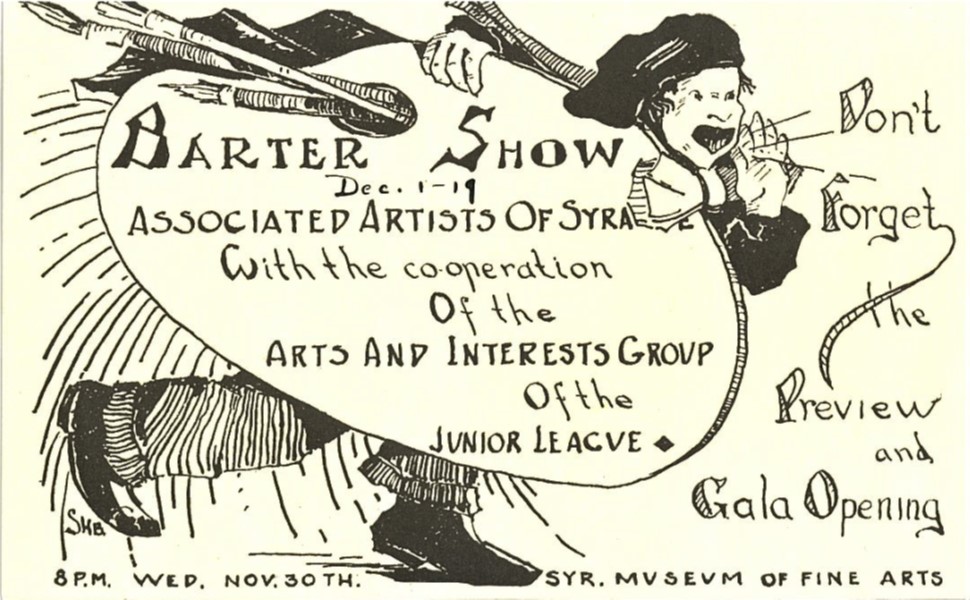
Installation photograph of Art for Bart’s Sake, Syracuse Museum of Fine Arts, December 1932
On November 30, 1932, the Syracuse Museum of Fine Arts (which merged with the Everson Museum of Art in 1959) opened its first barter exhibition, Art for Bart’s Sake, in an effort to demonstrate a commitment to local artists. Titled using a play on the famous French slogan “l’art pour l’art,” or “art for art’s sake,” which emerged as a response to debates about the role and value of art in daily life, the exhibition featured artwork by members of the Associated Artists of Syracuse that museum visitors could acquire by bartering household items. As long as both parties—the artist and the buyer—agreed, any trade was possible. Oil paintings could be exchanged for furniture, sculpture for coal, or even pottery for car parts. Twenty-eight artists participated in the show, and the Syracuse Herald reported that at the end of the gala opening, among other trades, four bushels of apples, writing paper, the services of a local doctor, and a book of poems were all bartered for different works of art. Arnold Bauer, a professor in the College of Fine Arts at Syracuse University, designed the exhibition to resemble an outdoor street fair. Framed works were hung salon style on gallery walls painted to look like wrought iron fencing as a way to evoke the architecture of the street inside a museum setting. To further emphasize the street fair aesthetic, the museum hired a portrait artist, a fortune teller, and street performers to entertain guests throughout the gala opening.
-Maggie Teschler, Curatorial Intern & Steffi Chappell, Assistant Curator


